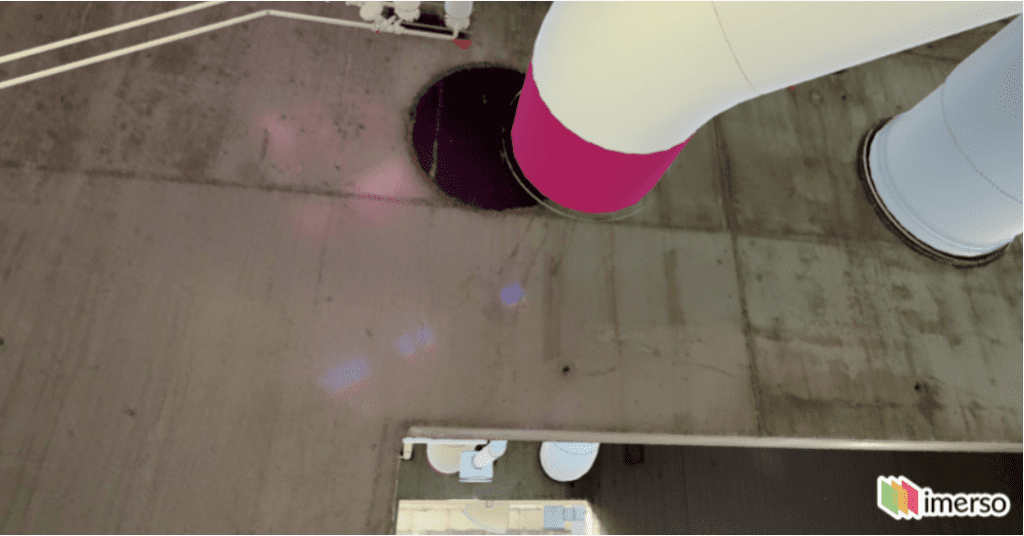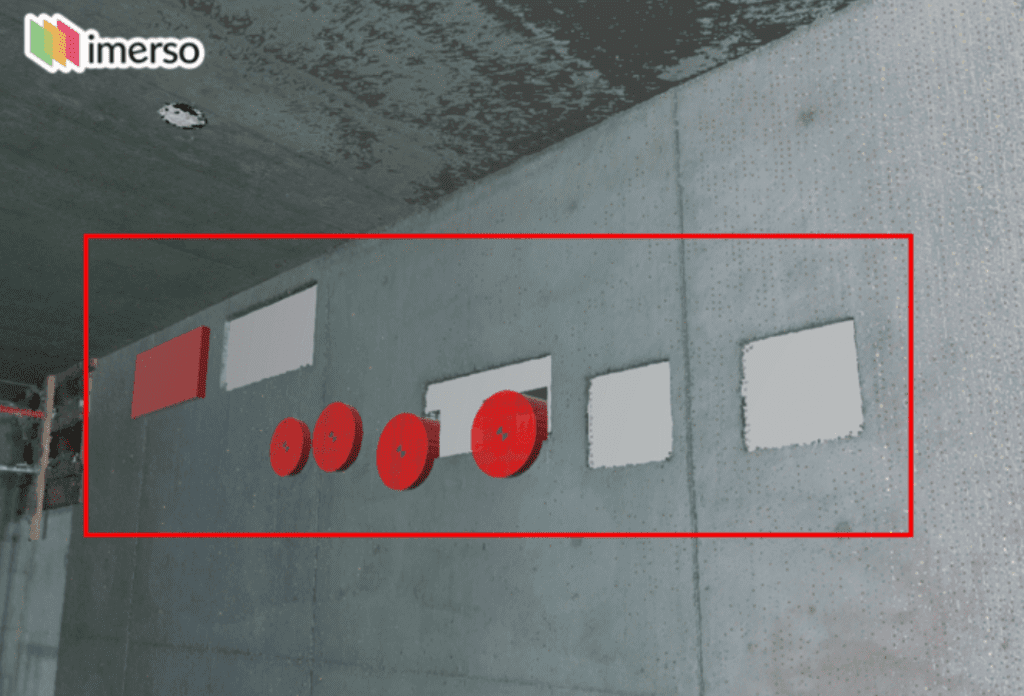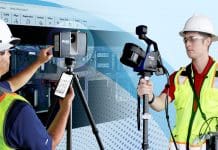Imerso explores how As-built survey software can close the gap between the site and the plans
“As-built” refers to the true representation of a building or structure, either while it’s being built or after it has been constructed.
As-built documentation serves multiple purposes in construction, including record keeping, quality control, verification and compliance, and facility management.
It provides a valuable historical record, ensures work aligns with plans, demonstrates compliance, and aids in facility maintenance. The traditional approach of Red-Line Drawings often involves using a red marker on a paper print-out of the schematics.
Relying solely on the traditional Red-Lining approach can be a time-consuming and inefficient process, especially when dealing with larger construction sites where data precision and speed are vital.
For these, it is far more advantageous to utilise specialised surveying equipment such as 3D Laser Scanners for conducting As-built surveys, which capture both images and millions of measurements in seconds, with millimetre precision.
Tracking the true onsite status
As-built surveys help document the onsite conditions as they truly are in reality. This allows to rectify discrepancies in previous documentation, or to detect deviations from work specifications.
If the documentation shows one thing, but the onsite reality is different, project teams will suffer from hidden surprises and be forced to improvise on the spot – leading to even more changes from the available documentation.

To have complete and useful as-built documentation, you must consider:
- Object Locations: Is everything installed in its correct place? Note down all changes to the location of elements like doors, wall openings, window casings, plumbing, millwork, and any other essential features.
- Object Dimensions: Do the onsite objects occupy the same volume, or floor footprint, as they should? Even if something is installed in its correct place, this can still be trouble if the installed object has a different dimension than documented. Write down all modifications to the dimensions of the elements installed at the site.
- Layout of Installations: This is a mix of the two considerations above. Some installations, like an HVAC or MEP system, are comprised of multiple individual components. Consider the overall installation of the system as a whole and how it deviates from the existing documentation. Note down the components that deviate.
- Placement of Fabrications: Similar to seeing an onsite object installed in a different location, you should also note down specific fabrications such as power outlets, lighting fixtures, staircase railings, or partition walls.
- Materials Used: Do the materials used in all onsite installations match those registered in the available documentation? Note down any relevant deviations.
Imerso’s As-Built software makes using 3D laser scanners easy
Most common data environment solutions (CDEs) provide a rudimentary form of As-built software, since they are integrated with mobile apps for punching checklists during onsite visits and capturing photos or even 360 cameras of the site.
Taking a photo, or even a 360 image, can show you what objects have been installed, but not if those installations meet the specified installation requirements.
For this, modern 3D laser scanners are a much more effective solution for capturing and analysing the As-built conditions- but often require trained operators. Luckily, modern As-built software like Imerso makes 3D laser scanning so easy that this can be used by anyone as a daily routine.
This not only captures high-definition 360 images but also millions of high-accuracy measurements in real 3D – effectively creating a digital version of the jobsite as it truly is.
Users can then access the jobsite reality remotely from any browser as a Digital Twin, and take any measurements, volumes and surface flatness measurements, among other functions.
Most crucially, Imerso is the only As-built survey software that automatically analyses the jobsite for compliance with the building specifications. This allows instantly reporting about the onsite status and catching any problematic onsite deviations, including a variety of issues impossible to see visually in photos or 360 images — providing project managers with unprecedented site supervision abilities.
Imerso construction management software
Imerso automatically checks the As-built conditions, reporting on work status and flagging problematic deviations early, without human subjectivity.
By enabling project managers to capture their jobsite routinely with such a level of accuracy and detail, several opportunities emerge to automate previously laborsome tasks, as well as to eliminate costly project risks.
Imerso can use the As-built data to predict upcoming clashes, enabling users to stop problems before they happen.

The platform also enables automatic updating of the BIM models to the real onsite reality at the press of a button – eliminating countless hours of manual modelling work. This helps keep the BIM models relevant throughout the construction phase, as well as ensuring accurate deliverables at Handover.
Having such detailed information readily available in the online platform (that all team members can access remotely from any browser), allows designers and engineers to rapidly get context and any measurements they need for promptly resolving engineering issues. Imerso customers are reporting increases above 96% in the speed of addressing onsite issues since starting to use the platform.
Clients are using their online “Digital Twins” to leverage current As-built survey data, allowing for remote virtual visits and enhanced access to information. This not only enhances communication and collaboration among project partners in a construction setting but also facilitates reporting and managing relationships with end clients. As a result, the use of reliable As-built information greatly improves transparency and accountability levels.
As-built software is a must-have in any construction project
As-built documentation plays a crucial role in every construction project, ensuring that the available information is accurate and detailed. Implementing effective routines to capture reliable and detailed information about the true status of the job site has become an essential strategy for any project.
With the increasing scale and complexity of construction projects, As-built survey software has become an invaluable tool for gaining insights into what is happening on the jobsite.
It provides accurate information that is free from human subjectivity and eliminates the need for time-consuming visits.
This article was adapted from Imerso’s blog, which you can read in full here.
















